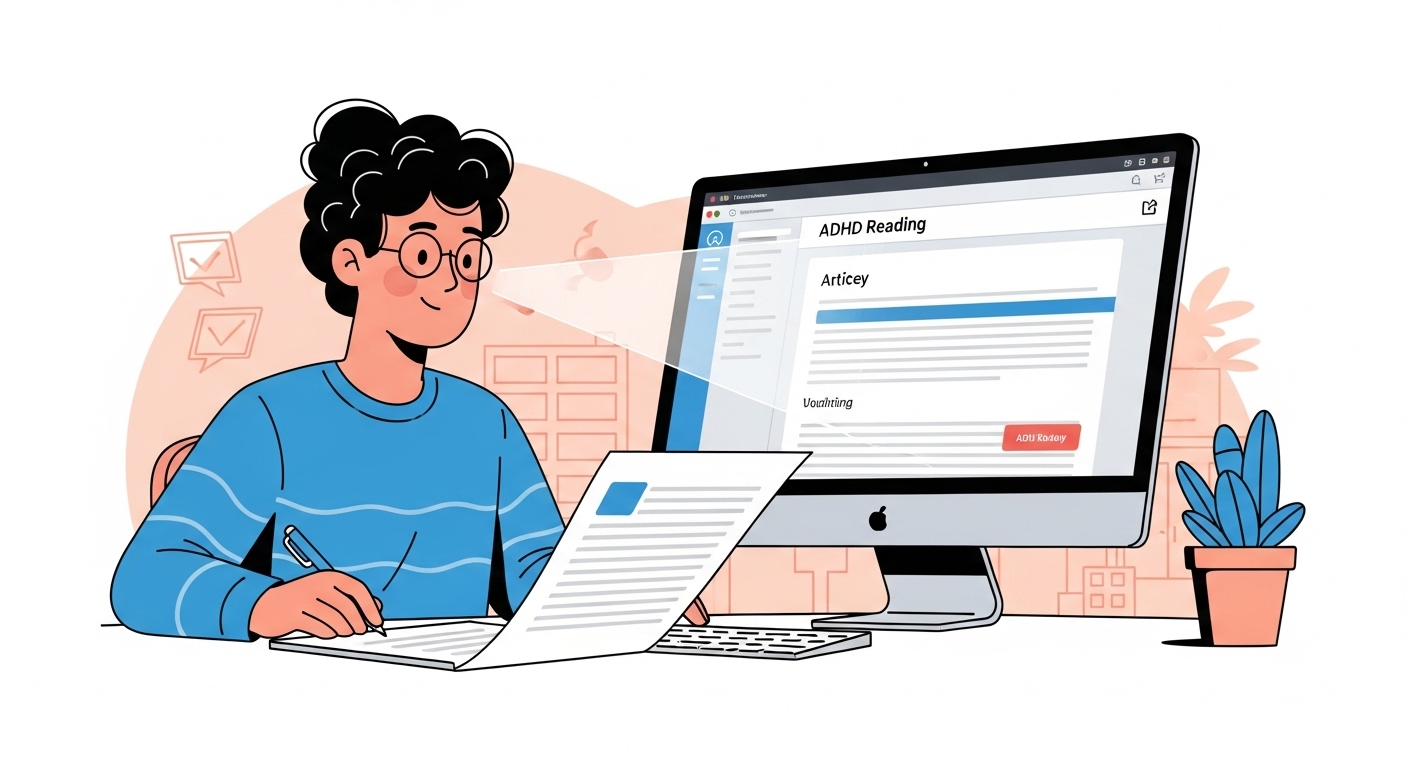Recently, a statement by Oscar-winning actor Anthony Hopkins has caused a stir on social media. He publicly stated that conditions like ADHD, OCD, and Asperger's are "trendy labels" and advised people not to "believe in anything." This remark was immediately met with strong criticism from numerous ADHD charities and patient groups.
This is not an overreaction. When a respected public figure dismissively calls a widely studied and confirmed neurodevelopmental disorder "nonsense," it not only exposes his personal misunderstanding but also deeply hurts countless individuals and families who struggle with this condition. Hopkins' comments represent a deeply rooted and extremely harmful bias in society: viewing ADHD as a trendy label rather than a real and complex condition.

Today, we must take this opportunity to clear the fog, better understand ADHD, and explore how we can better help the ADHD community overcome the reading gap in the age of information explosion.
Why Hopkins is Wrong: ADHD is Much More Than Just a Label
First, we must be clear: ADHD (Attention Deficit Hyperactivity Disorder) is not a trendy label that can be casually applied or removed. It is a well-documented neurodevelopmental disorder that originates in the brain. It's not an excuse for laziness or lack of willpower, but a genuine medical condition involving the neurobiology of the brain.
According to the latest scientific consensus, ADHD involves challenges in three core dimensions:
- Inattention: This is not the same as occasional daydreaming. People with ADHD have chronic difficulty maintaining attention, following instructions, and organizing tasks. Their brains are like a constantly scanning radar, bombarded by various external stimuli and internal thoughts, making it difficult to focus on a single task for an extended period, especially an activity requiring high concentration like reading.
- Hyperactivity: Manifests as persistent, inappropriate physical activity, such as restlessness or constant small movements of the hands and feet. In adults, this hyperactivity can manifest as inner restlessness or an endless stream of thoughts, i.e., mental noise.
- Impulsivity: Refers to the tendency to act without sufficient thought. This can lead to interrupting others in conversation, making hasty decisions, or having difficulty with delayed gratification.
These symptoms do not exist in isolation but are intertwined, profoundly affecting a person's daily life. Depending on the symptom presentation, ADHD is primarily divided into three clinical types: predominantly inattentive presentation, predominantly hyperactive-impulsive presentation, and combined presentation. Many girls and adult women primarily display inattentive and internalized symptoms, so they are often overlooked or misdiagnosed.
So what is the root of all this?
Scientific research indicates that ADHD is closely related to the functioning of specific brain regions, especially the prefrontal cortex. This area is responsible for so-called executive functions, including planning, decision-making, working memory, and impulse control. In the brains of people with ADHD, the transmission system of neurotransmitters (such as dopamine) is abnormal, leading to reduced communication efficiency in these key brain areas. It's as if the orchestra conductor has temporarily left his post; although the various sections are still playing, they cannot coordinate effectively.
Moreover, ADHD has very high heritability, with studies showing a heritability rate of up to 75%. This means that if a parent has ADHD, the risk of their child having it is significantly increased. It is rooted in our genes and brain structure, and it's not a problem that can be solved by simply being told to "focus."
Therefore, when Hopkins casually dismissed it as "nonsense," he ignored the vast body of scientific evidence and the real, day-to-day struggles of countless patients. The occasional distraction of the average person is worlds away from the chronic, persistent, and debilitating difficulties that people with ADHD experience.
And among these difficulties, reading, as a fundamental means of acquiring knowledge and engaging in deep thought, often becomes a particularly insurmountable mountain for people with ADHD.
When ADHD Meets Reading: A Difficult Battle
Imagine trying to read, but the words on the page seem to dance, and your thoughts drift uncontrollably to the bird singing outside, last night's game, or tomorrow's work... You try to pull focus back, but fail repeatedly. This is the daily reality for many people with ADHD.
The core reasons why reading is so difficult for them are:
- Inability to Sustain Attention: Difficulty maintaining focus on static text for long periods, leading to skipping lines, skipping words, or rereading the same paragraph without understanding it.
- Working Memory Deficits: Forgetting what was just read, making it difficult to build a complete context and logical chain in their minds, resulting in comprehension difficulties.
- Internal Distractions: The incessant "noise" of thoughts in their brains makes it difficult to immerse themselves in the world of reading.

Therefore, well-intentioned advice like "calm down and focus" is often ineffective and can even increase their frustration. The root of the problem is not their attitude, but the way their brains work.
Let the ADHD Reading Plugin Give You a Hand
Fortunately, there are now reading tools designed specifically for the ADHD community!
I must strongly recommend a free Chrome extension: ADHD Reading. It's like a thoughtful reading companion that uses the power of technology to precisely address the pain points that people with ADHD experience when reading.
It has several "god-level" features:
- Smart Text Highlighting: It automatically bolds the beginning of each word, acting as a visual guide to help your eyes scan the text faster. This utilizes the principle of artificial fixation points, providing a visual anchor for a wandering gaze, significantly reducing line and word skipping.
- Focus Assistant: It highlights the line you're currently reading and dims the rest of the page. This is like shining a spotlight for you, allowing you to stay focused on the current content and block out irrelevant distractions.
- Layout Optimization: With one click, it can adjust the font, line spacing, and paragraph spacing of a web page, instantly making a chaotic layout clear and easy to read, greatly reducing visual fatigue and cognitive load.
These features are not just imagined; they are based on a deep understanding of the cognitive characteristics of ADHD. It doesn't force the brain to change, but cleverly modifies the presentation of information to suit the brain's needs.
From Understanding to Empowerment: What We Really Need
Let's return to Anthony Hopkins' comments. What the ADHD community needs is not casual dismissal and ignorant labels, but understanding based on science and effective support.
Tools like ADHD Reading are the embodiment of this understanding. They show us that neurological differences should not be a barrier to acquiring knowledge. Through technological empowerment, we can pave the way for people with ADHD to swim freely in the ocean of knowledge.
If you or someone you know is also struggling with reading, try this free tool. This could be the first step to improving your reading experience and rediscovering the joy of reading.
Let's work together to replace misunderstanding with understanding and blame with support, to build a more inclusive and friendly society for neurodiversity. Because every brain deserves to be seen and respected.